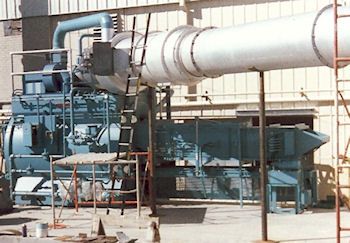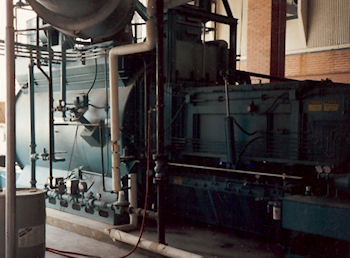Medical Waste Sections:
Medical Waste Autoclaves
Download our medical waste brochure.
Medical Waste Incineration
Incinerator Systems
Incineration is a thermal treatment technology for waste that involves the combustion of organic materials. Moss has been in the incineration business since 1982. Since that time, we have sold and installed several hundred medical waste incineration systems to health care facilities. Moss is designing and building the future with incinerators that achieve complete waste combustion. We can handle situations that involve medical waste, solid or liquid waste, hazardous waste and other waste streams with a full range of products that include fixed hearth, rotary kiln and vertical incinerators. These units range in size from small pathological units to large waste-to-energy systems that recover waste heat from the combustion process and turn it into valuable steam for the hospital. Some of our controlled air units are designed with secondary combustion chambers that have extended dwell (retention) time for meeting extremely stringent air pollution regulations. Our rotary kiln, fluidized bed and gasifier combustion technologies are state of the art designs and can be used for a variety of difficult projects where standard fixed hearth units are not the preferred technology. In addition, we have a full line of scrubbers, filters, baghouses and precipitators available to meet BACT and MACT air standards.

Moss has incineration systems that are designed for single shift operation and others designed and built to run 24 hours a day with various forms of automatic ash removal. Our systems include fixed hearth incinerators sized to 2,000 lbs./hour, rotary kiln incinerators to 3,000 lbs./hour, vertical incinerators sized to 2,400 lbs./day, waste to energy systems providing an incinerator and boiler to satisfy process/comfort needs and alternate fuel systems (includes non halogenated flammable liquids, anaerobic digester gas and heavy or off specification waste oils). Moss can offer a single floor batch type design as well as a multi-hearth design with internal ash rams for extended operation. Our incinerator systems can be used in medical, pathological, industrial, municipal and some hazardous operations.

Thermal processing, if designed and used properly, can be made to limit particulate and contaminated gas emissions in order to comply with stringent clean air regulations. When incineration is incorporated with heat recovery it can offer the user a tremendous heat source with a short term return on investment.